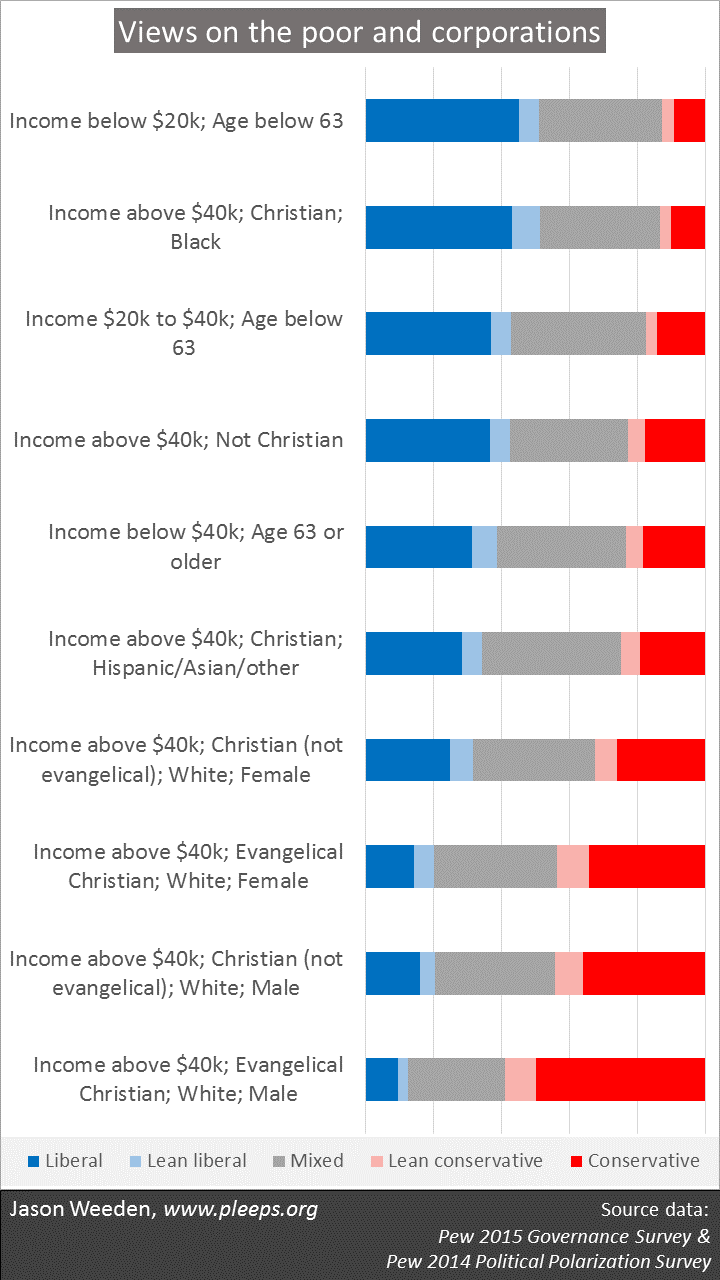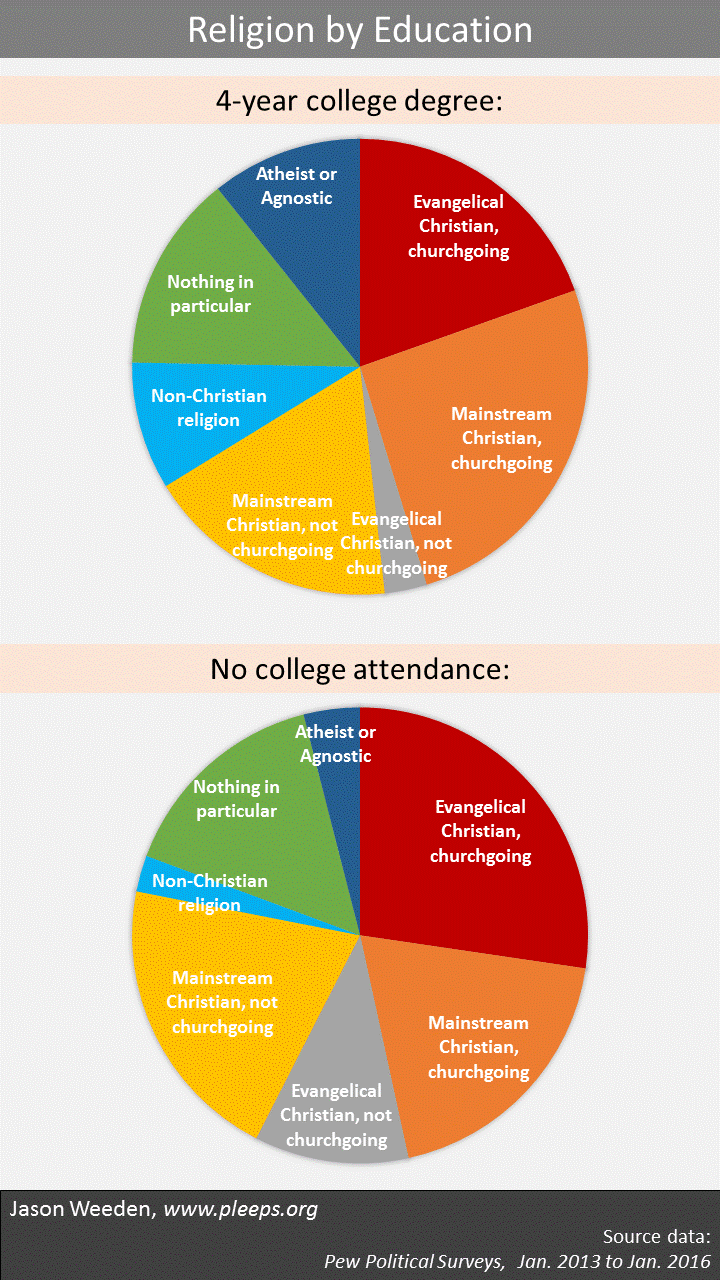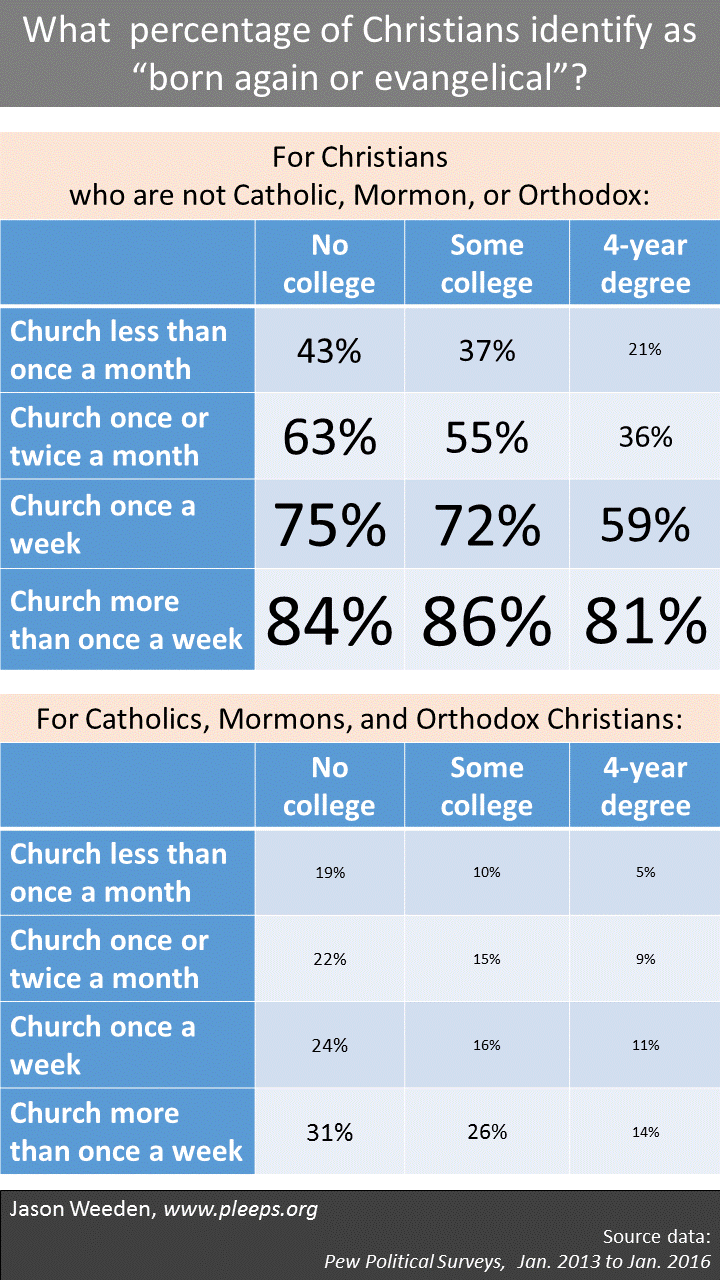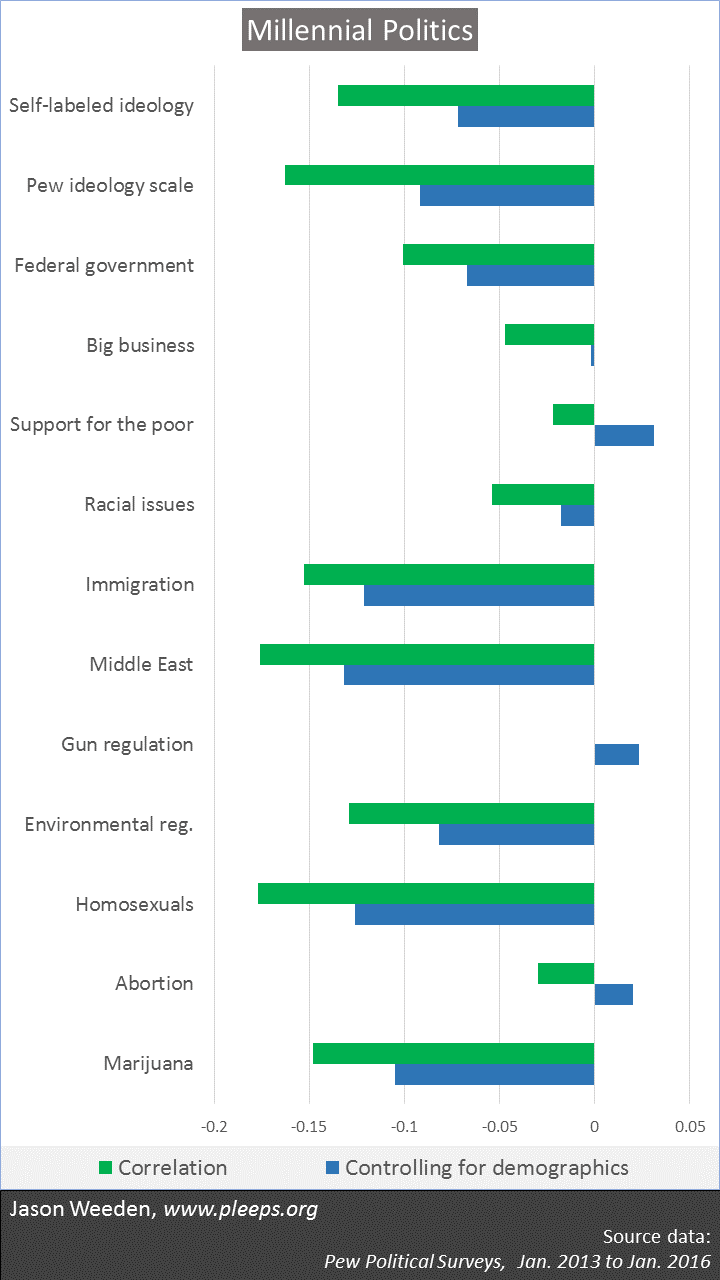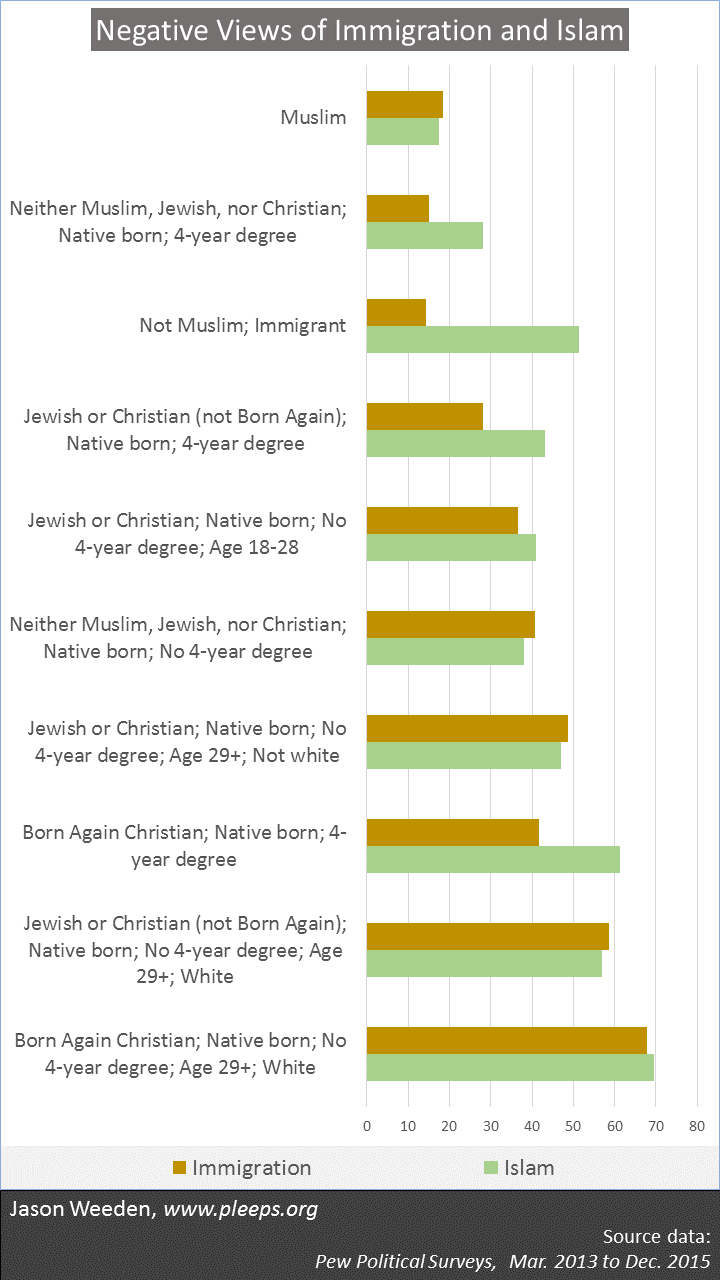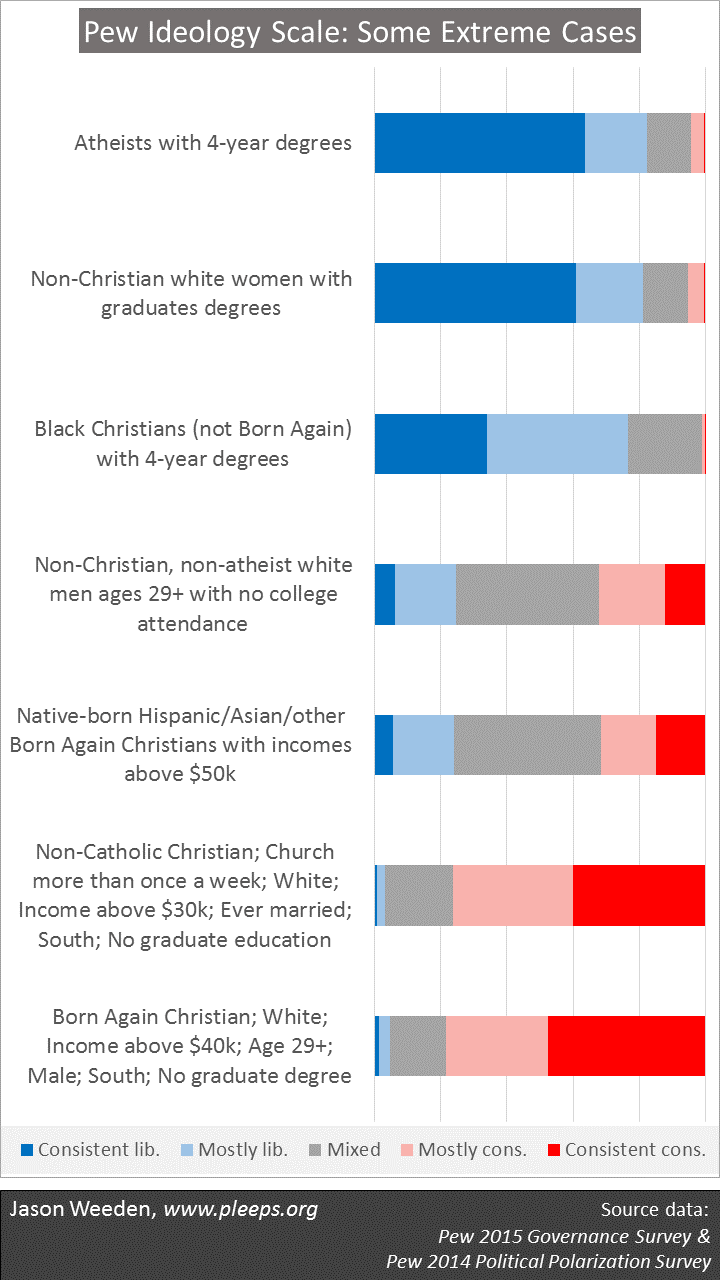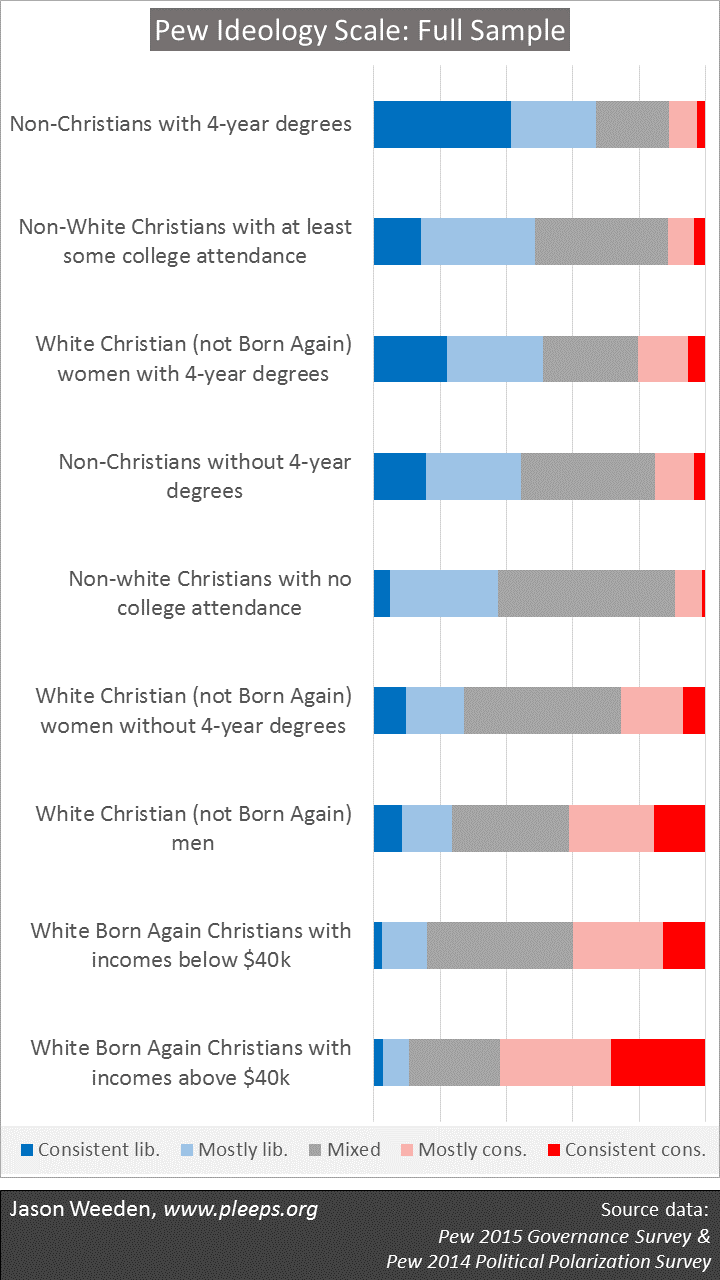It’s probably not surprising to learn that poorer folks have far more liberal views on income redistribution than richer folks on average. Also, I don’t think anyone would be shocked to learn that, even taking income into account, there are big racial differences in economic politics.
But some other major U.S. divisions are less well known. For example, moderate-income seniors are quite a bit less liberal on income redistribution than other members of the working/middle classes. And in perhaps the least-recognized major pattern, at higher income levels, non-Christians are a lot more liberal on economics than Christians.
Looking back a few decades, income and race (those unsurprising indicators) represent longstanding divisions in economic politics. But the divisions involving age and religion are actually new. The chart below shows trend lines from 1978 to 2014 in various groups’ support for income redistribution—whether the government should reduce income differences through taxing the wealthy and giving assistance to the poor (higher values on the chart) or whether the government should not concern itself with reducing income differences (lower values on the chart). The downward slopes represent conservative shifts and upward slopes represent liberal shifts.
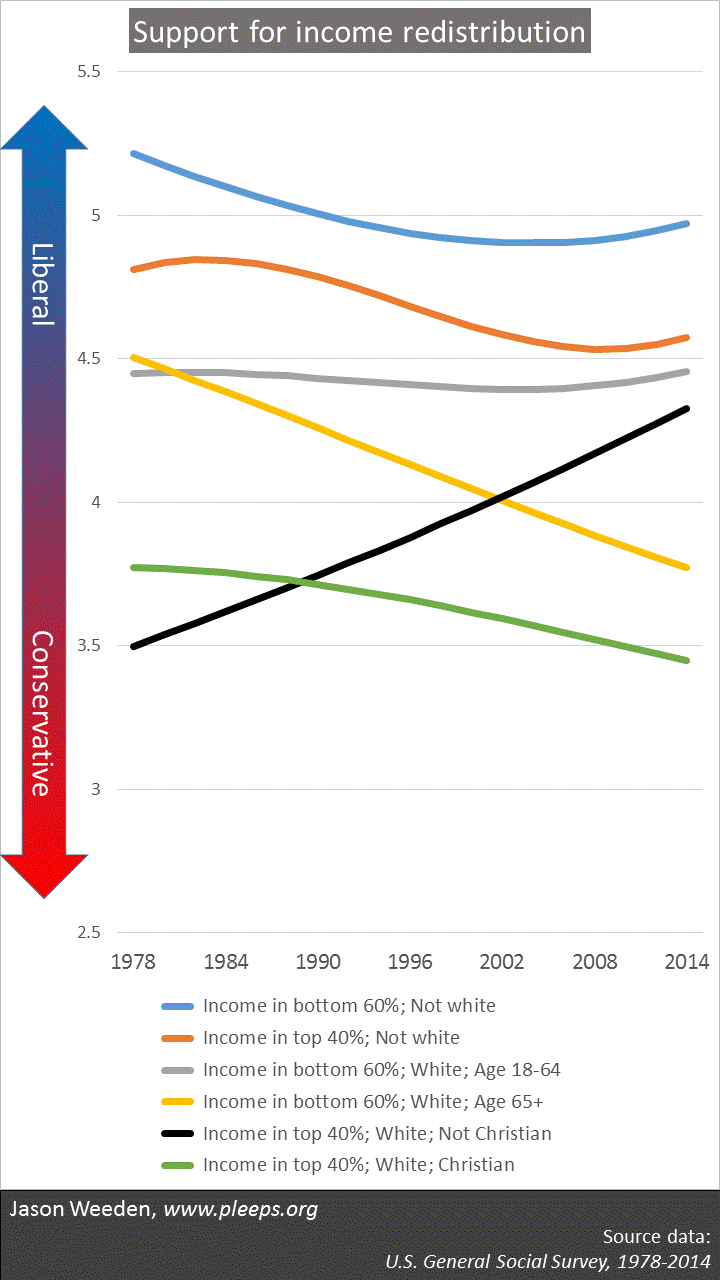 (Technical notes: The total sample size is 31,653. Results are weighted. The opinion item is the GSS’s EQWLTH variable, reverse-coded such that 7 is the most liberal value and 1 is the most conservative. Income percentiles are based on the GSS’s inflation-adjusted family income variable. “White” means non-Hispanic white.)
(Technical notes: The total sample size is 31,653. Results are weighted. The opinion item is the GSS’s EQWLTH variable, reverse-coded such that 7 is the most liberal value and 1 is the most conservative. Income percentiles are based on the GSS’s inflation-adjusted family income variable. “White” means non-Hispanic white.)
It’s important to keep in mind that these data aren’t tracking specific individuals, but rather come from surveying different people at different times—thus, the folks represented by these groups in the 1980s are not necessarily the same folks in the 2010s. Over these years, some younger folks reached survey-eligible adulthood and some older folks died; many immigrated to the U.S.; some non-seniors became seniors; and so on. There’s a lot going on here. These trend lines might represent individual-level shifts or cohort replacement or both.
Changes in education, income, and race
The chart shows that lots of groups have become somewhat more conservative (i.e., lines that slope downward overall). These trends largely come from changes within these groups in education, income, and racial composition. Every group on the chart contains people with higher average education levels in the later years than in the earlier ones. Low education levels typically translate into more liberal economic views, so that’s part of the overall trend—many of these groups have become a bit more conservative on redistribution because their populations now have more education.
Also, income inequality has been on the rise—richer groups have gotten richer while poorer groups haven’t really become less poor. The key exception here is seniors, where poverty levels have declined over these years. So that’s another part of it—seniors as well as folks in higher-income groups tend to be a bit more conservative these days because they’re richer on average than they used to be.
There’s an added factor in the non-white groups (the top two lines on the chart). Their somewhat conservative trend over time relates not only to education and income, but also to the fact the earlier years primarily included blacks, but now include large proportions of Hispanics and Asians. Blacks have been more liberal than Hispanics and Asians on economic items throughout the survey period, so, as the proportion of blacks decreases, the economic liberalness of non-whites as a whole declines.
These factors statistically account for the lion’s share of the conservative-sloping trends on the chart. The minor exception is the more extreme conservative trend among poorer white seniors. For them, about half of the slope is due to changes in education and poverty, but it’s not clear to me what the other half is (I checked whether it’s changes in party identification and self-labeled ideology, and that’s not it).
While changes in education, income, and race account for most of the trends seen on the chart, there’s something obvious left over—the dramatically upward-sloping black line. One of these kids is doing his own thing.
The fantastic oddity of wealthier white non-Christians
Against a backdrop of increased education and wealth and conservative-trending lines stands an unfathomable deviation: wealthier white non-Christians (mostly including non-religious folks, but also Jews, Buddhists, etc.). They stand naked in flame, First of Their Name, the Unburnt, Queen of the Liberals and the Elite Media, Khaleesi of the Great Coastal Cities, Breaker of Self-Interest, and Mother of All Political Puzzles.
Are they better educated and richer than they used to be? Yes. But still their liberalism rises. Is that just because they’re more likely now to be self-styled liberal Democrats than they used to be? That may be a bit of it, but it’s complicated—the increased leftward push of party and ideology is almost perfectly balanced against the rightward push of their increasing socioeconomic status, leading statistically to close to a 0% overall explanation of their dramatic rise in liberalism on economic issues.
I can be more specific about what’s happening, but I can’t tell you why it’s happening. It’s ideological/coalitional consistency. Over the past few decades, as the parties have sorted into liberal and conservative policy bundles, educated whites (more than other groups) have greatly increased the extent to which their views across disparate political issues line up on a single left-right axis. And the black line on the chart above is the main component of this recent pattern—namely, the sorts of people who have long been liberal on religious issues (abortion, gay rights, school prayer, etc.) have become likely to align their economic politics with their religious politics, something they didn’t used to do. There have been changes across cohorts as well as changes within cohorts.
The thing that makes it such a tough nut is that it’s an interaction between a specific group and the nature of the political times. It’s not that white non-Christians are inherently economic liberals—in the Reagan years they were as conservative in their economic views as white Christians. And it’s not that everyone these days is pretty consistently adopting the wide range of issue positions represented by their parties and ideologies—it may sometimes seem that way, but it’s just really not true of large swaths of the general public. Instead, it’s something about how this group is responding to these times. And I’m not sure what that something is.
Still waters run deep
If we look at support for income redistribution among the public as a whole, there’s no straight trend across the past few decades—there have pretty consistently been somewhat more liberals than conservatives. But the chart above is a good reminder of how much can be happening beneath a smooth surface. It’s not just that there are big demographic fissures in public opinion, but the fault lines can vary over time.
That’s part of what makes social science so hard. It’s like trying to solve a big crossword puzzle that’s constantly evolving into a different puzzle—where some of the clues and required answers change even as you’re trying to fill them in.

